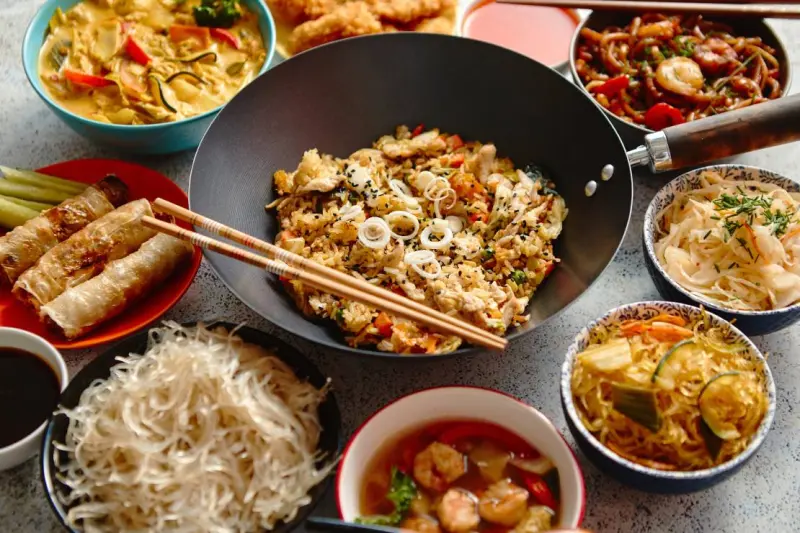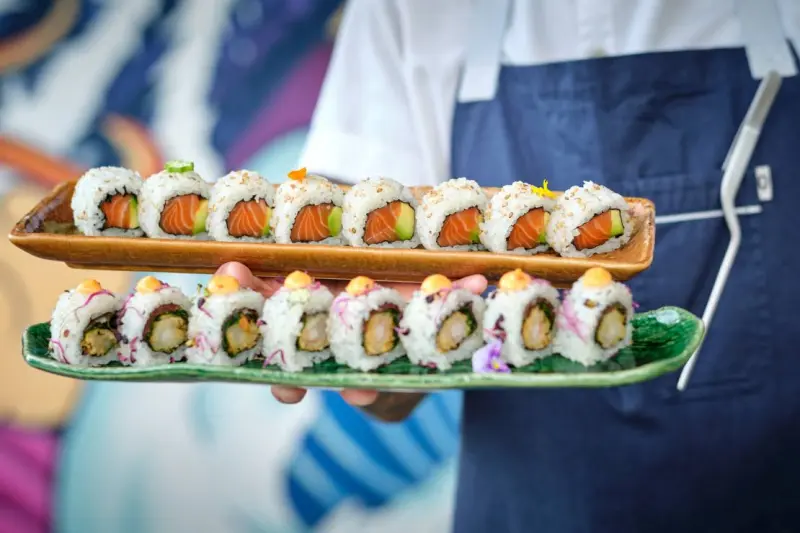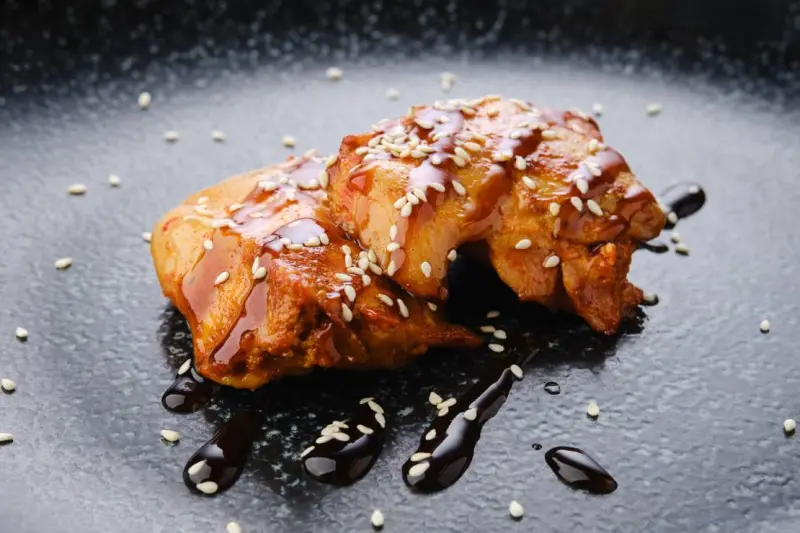

East Asian cuisine, a vast and diverse culinary landscape, has captivated palates worldwide with its intricate flavors, fresh ingredients, and time-honored traditions. From the bustling street food stalls of Bangkok to the refined kaiseki dinners of Kyoto, Asian food offers an unparalleled gastronomic adventure that captivates the senses and showcases the rich diversity and deep cultural heritage of the region. This blog post will guide you through some of the most popular and essential East Asian dishes you must try, exploring the distinct characteristics that set each cuisine apart. Prepare to embark on a delicious journey that will undoubtedly leave you craving more.

East Asian cuisine covers many countries like China, Japan, and Korea, each distinct but sharing core traits. It focuses on flavor balance (sweet, sour, salty, bitter, umami) and fresh, seasonal ingredients. Cooking methods are varied, from stir-frying to steaming. Rice and noodles are staple foods, and fermented ingredients (especially in Korea) add complex flavors and aid preservation.
Chinese cuisine is incredibly diverse by region but consistently uses soy sauce, ginger, garlic, and scallions as core aromatics. A key characteristic is "Wok Hay," the smoky flavor achieved from high-heat stir-frying. Chinese cooking showcases a vast range of tastes, from Sichuan's numbing spice to Cantonese dim sum's delicate nuances. Explore beyond common dishes to discover regional specialties, such as Peking duck or mapo tofu.
While sushi is Japan's most famous culinary export, Japanese cuisine offers much more. Experience the comforting richness of ramen, with its flavorful broth and various toppings. Try tempura, delicately battered and fried seafood and vegetables, or the universally loved Chicken with Teriyaki Sauce, known for its perfect sweet-savory balance. Other delicious options include okonomiyaki, donburi, and yakitori, all showcasing Japan's dedication to quality and precise flavors.
Korean cuisine stands out with its bold, robust, and often spicy flavors, heavily influenced by the widespread use of fermented ingredients. The undisputed king of Korean dishes is kimchi, a spicy, fermented cabbage that is served with virtually every meal. Gochujang (Korean chili paste) and gochugaru (Korean chili powder) are central to the fiery kick found in many dishes, while doenjang (fermented soybean paste) adds deep, earthy umami.
The communal dining experience is also a hallmark of Korean food, with an array of banchan (small side dishes) accompanying every meal, encouraging sharing and variety. The unique combination of spiciness, savoriness, and the tangy depth of fermentation makes Korean cuisine an unforgettable adventure for the taste buds.
While each East Asian country boasts its unique pantry, there's a fascinating overlap of ingredients that form the backbone of Asian cuisine dishes. Soy sauce is the universal seasoning, adding a salty, umami depth to almost everything. Rice vinegar offers a mild tanginess, essential for dressings and marinades. Sesame oil, with its distinctive nutty aroma, is often used as a finishing oil. Fresh ginger and garlic are the aromatic powerhouses, sautéed as a base for countless dishes. Chili peppers, in various forms (fresh, dried, flaked, or pasted), provide the characteristic heat found in many regional cuisines.
Noodles—crafted from wheat, rice, or eggs—are remarkably versatile, forming the backbone of countless dishes ranging from comforting soups and vibrant stir-fries to refreshing cold salads. Complementing these dishes, fresh herbs such as cilantro and scallions are expertly used not only as garnishes but also to elevate and brighten the overall flavor profile, adding a burst of freshness and aromatic complexity.
Here are some of the top East Asian dishes that are essential culinary experiences. These carefully selected specialties showcase the remarkable diversity, rich traditions, and exquisite flavors that define the region’s most celebrated and beloved cuisines.
More than just raw fish, sushi is a highly refined culinary art form from Japan. It encompasses a diverse array of preparations, ranging from delicate nigiri—thin slices of fresh raw fish or seafood artfully pressed atop seasoned vinegared rice—to meticulously crafted maki rolls, where flavorful fillings and rice are elegantly wrapped in crisp nori seaweed. The appeal of sushi lies in its simplicity and the emphasis on the freshness and quality of its ingredients. Each piece is a delicate balance of flavor and texture, often served with soy sauce, wasabi, and pickled ginger to cleanse the palate. It's an essential experience for any food lover.

Hailing from Japan, ramen is a soul-satisfying noodle soup that has garnered a massive global following. While simple in concept, the depth of flavor in a bowl of ramen comes from its meticulously prepared broth, which can range from rich tonkotsu (pork bone) to light shio (salt) or savory miso. The springy wheat noodles are perfectly complemented by toppings like succulent chashu pork, soft-boiled ajitama eggs, crisp nori, and fresh scallions. It’s a comforting and customizable dish, perfect for any time of year.
Dumplings are a beloved comfort food found across East Asia, with each country offering its unique variations. Whether they are the delicately steamed jiaozi of China, the pan-fried gyoza of Japan, or the hearty mandu of Korea, the concept remains the same: a flavorful filling encased in a dough wrapper. Fillings range from minced pork and cabbage to shrimp and chives, seasoned with ginger, garlic, and soy sauce. They can be boiled, steamed, pan-fried to crispy perfection, or even deep-fried, making them a versatile and utterly delicious treat.
Noodles are an indispensable part of East Asian cuisine, offering incredible versatility and comfort. From the thick, chewy udon noodles of Japan to the thin, delicate rice vermicelli used in Vietnamese pho, and the diverse wheat and egg noodles of China, their applications are endless. They can be stir-fried with vegetables and meats (like Chinese chow mein or Thai pad see ew), served in rich broths (think Vietnamese pho or Japanese ramen), or enjoyed cold in refreshing salads (like Korean bibim guksu). The texture and chewiness of the noodles themselves are often as important as the sauce or broth they're served with, making them a truly fundamental component of Asian food.

Chicken with Teriyaki Sauce is a quintessential Japanese dish that has achieved widespread popularity globally due to its irresistible sweet and savory glaze. The teriyaki sauce, typically a blend of soy sauce, mirin (sweet rice wine), sake, and sugar, is simmered until it reduces to a glossy, thick consistency. Tender chicken pieces (often thighs) are then grilled, pan-fried, or baked and generously coated in this rich sauce. It's a perfect example of the balanced flavor profile that Japanese cuisine is celebrated for, often served with steamed rice and a sprinkle of sesame seeds.
If your mouth is watering after reading about these incredible East Asian dishes, it's time to turn inspiration into a delicious reality! For an authentic and memorable Asian cuisine food experience in Letoonia, look no further than Chopstix Restaurant. They pride themselves on offering a wide selection of popular Asian food items, from the comforting bowls of ramen and the savory delights of dumplings to the perfectly glazed Chicken with Teriyaki Sauce.
If you're searching for Fethiye Asian food, Chopstix is your destination. Whether you're a seasoned fan of Asian cuisine or just beginning your culinary exploration, Chopstix Restaurant provides a welcoming atmosphere where you can savor the rich traditions and vibrant flavors of the East. And don't forget to ask about their Asian food desserts to complete your delicious evening! What East Asian dish are you most excited to try first?